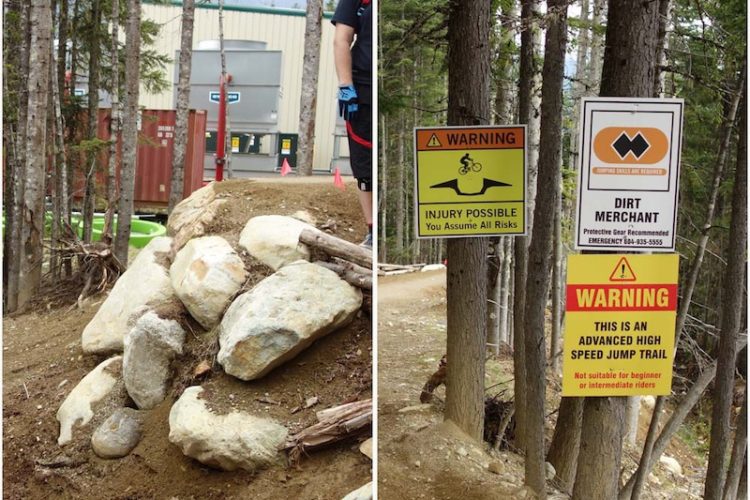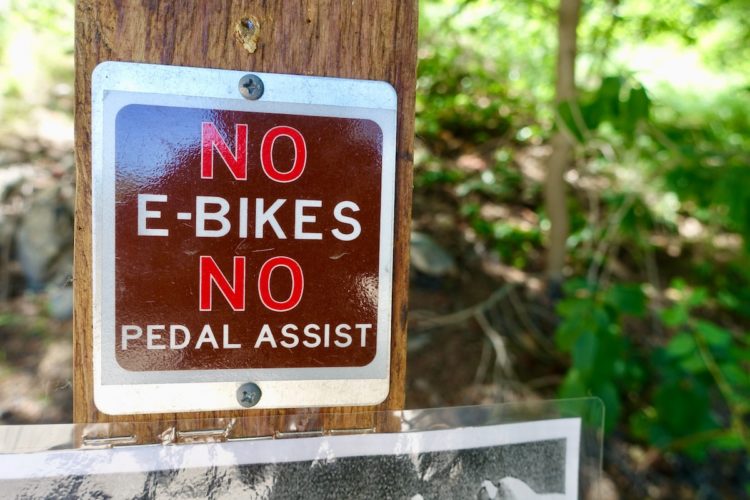
Mountain bike wheels have hubs. Trails do too.
The trail hub concept isn’t new, but it is increasingly favored by trail planners and designers as a way to keep riders on track and many are using hubs as an opportunity to make a statement like the Oz Castle build in Arkansas. Eli Glesmann of Rock Solid Trail Contracting tells me trail hubs — also known as clusters — are becoming more common.
“We try to incorporate hubs on every design,” said Glesmann.

Nearly two decades ago, stacked loops rather than trail clusters, were seen as an ideal solution to managing trail traffic. IMBA’s Guide to Building Sweet Singletrack, published in 2004, makes the case for laying trails out in loops saying, “trail systems with loops are appealing because they offer variety.”
The book goes on to note that stacked-loop systems “make optimal use of available land” and perhaps most importantly, separate beginners from advanced riders who are willing and able to ride farther to access more challenging trails. While the authors had a lot to say about loops, trail hubs didn’t get a single mention in the trail design process section.

Look at any road map and it’s clear that hubs are a natural traffic management solution, as routes of travel converge and cluster in towns and cities. Today’s trail designers, however, are taking their cues from another destination: ski resorts.
“That’s where we really first adapted it, was in kind of a ski area location,” said Mike Repyak, IMBA Trail Solutions Director of Planning and Design. Lifts usually feed into hubs where skiers and riders can choose among several trails down the mountain based on their own skills and abilities. “There’s a way to do it so that everybody can regroup and go and choose their own adventure. And it works great.”
Rider ability
Stacked loop designs seek to separate riders of varying abilities too, but there are drawbacks since the advanced riders are forced to travel the easier trails to get to where they’re going. Repyak notes, “the downside is that advanced riders are blowing through a green trail, and blowing through the blue trail, to get to the black.” With a trail hub layout, “they’re into the black trails right away. So you’re able to achieve users’ objectives earlier.”
Most trail hubs are designed with trails of varying difficulties leaving from a single common starting point. That means new riders have easy access to trails that may be above their current skill level, or they could find themselves on an expert trail by mistake.
“There are things you can do visually with the trail, and also your skills filter […] to make sure that you don’t have a beginner jumping onto a black trail,” said Repyak.
Signage is a must for directing riders to the appropriate trail for their skill level, and in addition to you-are-here-style overview maps, effective clusters also feature signs on each trail denoting the trail’s difficulty rating. Filter features or drop-ins can also be used to prepare riders for what lies ahead.
Trail systems with multiple hubs offer riders the ability to choose their own adventure and a literal path to skills progression. For example, a rider might choose the green trail off the first hub and if it goes well, they could hop onto a blue trail when they reach the next cluster. Or go back up and choose a more difficult trail down the second time.



Social ride
Glesmann and Repyak both note there’s an important social aspect to trail hubs as a meeting place for everyone, regardless of skill or experience. A well designed cluster provides space for riders to gather, often at the top of a climb. Clusters tend to sit at high points within the trail system and generally feature shared climbing trails that encourage social interaction as well.
But not all trail hubs are designed as places to hang out. Repyak notes some are beginning to evolve into roundabouts, allowing riders to flow through quickly and avoid conflicts with other trail users.
In a related development, directional trails are seen as one solution to managing increased traffic and making trails safer for e-bike use, and trail hubs are an easy way to connect them. Designing trails for one-way traffic nearly doubles a trail’s capacity, and there are fewer chances for user conflict.
Finding our way
With multiple trails radiating from a single intersection, riders are forced to stop and make a decision, which can harsh the flow. On a loop trail, for example, one can simply hang a right at every intersection and generally get to where they’re going. It’s not that simple with hubs.
“We’re looking to minimize intersections and hubs as best we can,” said Repyak. “The key to any layout, even if it’s two trails intersecting, is signage and wayfinding. That’s what allows you to move through a system without having to stop and look at your phone every intersection.”
Save time and get creative
Trail clusters offer builders a central point for stockpiling materials and moving equipment during construction compared to stacked loop systems that are more spread out. Similarly hubs tend to be a good choice for places with limited space for trails, and where builders want to maximize the number of descents they can get out of a single slope.
Recent projects like Oz Castle have elevated the humble trail intersection to an art form that’s not only Insta-worthy but also functional. Since multiple trails intersect at a single point it’s worth putting extra labor and materials into a hub that most users will get to experience at least once and potentially multiple times during their ride.
Hubs have been around since the invention of the wheel, and as simple as these trail intersections may seem, today’s designs are the result of much thought and evolution. Like the man behind the curtain in the film version of Oz, Repyak hints there’s much more than meets the eye when it comes to trail design.
“We have a lot of things in our toolbox to have people interface with a trail in a manner that they don’t actually realize we’re manipulating their experience.”



















